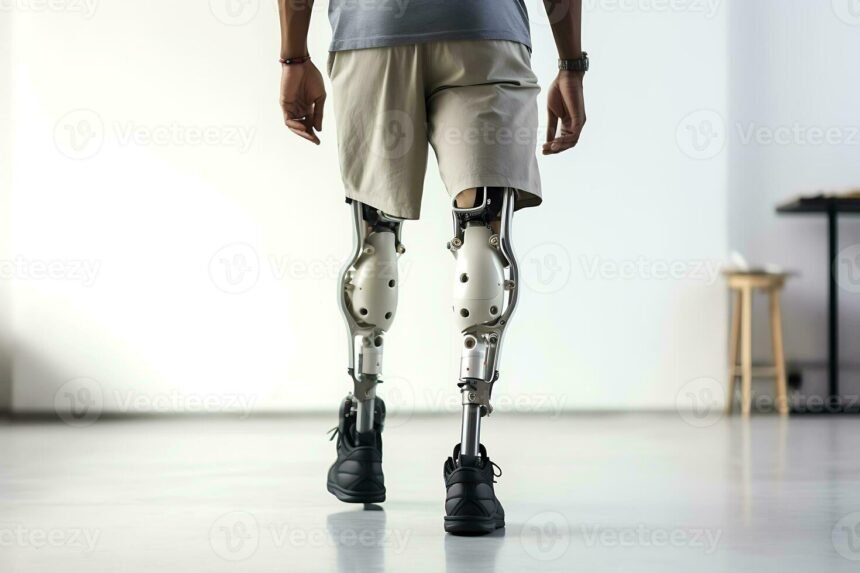Medical prosthetics have come a long way from their early, purely functional beginnings. Historically, prosthetics were designed with a single goal in mind: to restore basic mobility or replace lost body parts. They were often bulky, uncomfortable, and visually unappealing. However, the landscape of prosthetic design has evolved dramatically. Today, prosthetics are not just about function—they are also about style, individuality, and empowerment. Modern prosthetic design seamlessly merges medical necessity with aesthetic innovation, offering wearers an unprecedented sense of confidence and identity.
The Evolution of Prosthetics
For centuries, prosthetic devices were rudimentary, often made from wood, metal, or leather. These early designs focused solely on functionality, enabling basic movement or support. While they served their purpose, the lack of personalization and comfort limited their widespread adoption. As medical science progressed, prosthetics became lighter and more anatomically accurate, incorporating materials like plastics and advanced alloys.
The 21st century ushered in a revolution in prosthetic design. Engineers, designers, and medical professionals began working collaboratively to create prosthetics that catered to both physical needs and personal style. The goal was no longer just to replace a limb—it was to enhance the wearer’s life, boost self-esteem, and embrace individuality.
Design Meets Functionality
Modern prosthetics represent the pinnacle of engineering and design. Utilizing advanced materials like carbon fiber, titanium, and silicone, these devices are now stronger, lighter, and more flexible than ever. Cutting-edge technologies, including microprocessor-controlled knees, robotic arms, and myoelectric systems, enable users to perform natural, precise movements, making everyday activities more seamless and efficient.
Aesthetic innovation has also become a major focus. With the precision of 5-axis CNC machining, prosthetic components can be intricately shaped and finished with exceptional accuracy, allowing for a wide range of textures, colors, and forms. Users can select from sleek metallic designs, lifelike skin tones, or entirely custom artistic elements such as patterns, LED accents, or interchangeable covers. This combination of technical sophistication and personalized design transforms prosthetics from purely functional devices into expressive extensions of the wearer’s personality.
Fashion-Forward Prosthetics
The concept of fashion in prosthetics is more than a trend—it’s a movement toward normalizing diversity and embracing individuality. Designers collaborate with artists, fashion houses, and even celebrities to create prosthetics that are visually striking while maintaining functionality. For instance, a prosthetic leg may be adorned with geometric patterns, vibrant colors, or avant-garde designs that make the limb feel like a personal accessory rather than a medical device.
This approach has profound psychological benefits. When users can express their style through their prosthetic, it transforms the device from a symbol of loss into a celebration of resilience and identity. The wearer no longer feels defined by their disability; instead, they can showcase their uniqueness and confidence.
Customization and Personalization
Customization is a hallmark of modern prosthetic design. Advanced scanning and 3D printing technologies allow for precise fitting, ensuring comfort and functionality. Additionally, users can choose aesthetic features that resonate with their personality or lifestyle. For athletes, prosthetics may be streamlined for speed and agility. For artists or performers, the design may emphasize visual appeal and self-expression.
Furthermore, many companies now offer modular prosthetic components, enabling wearers to swap covers, colors, or even entire sections of the limb to match different occasions, outfits, or moods. This level of personalization elevates prosthetics from mere tools to empowering extensions of one’s identity.
The Future of Prosthetic Design
Looking ahead, the fusion of function and fashion in prosthetic design shows no signs of slowing down. Innovations in robotics, artificial intelligence, and materials science promise even more advanced, adaptable, and stylish prosthetics. Imagine prosthetics that adjust automatically to the user’s activity level, change color with mood, or incorporate augmented reality features for enhanced interaction. The possibilities are virtually limitless.
In Conclusion
Modern prosthetic design has transformed the way we think about assistive technology. It is no longer enough for a prosthetic to restore function; it must also empower the individual wearing it. By embracing aesthetics, personalization, and innovation, today’s prosthetics allow users to express themselves confidently while regaining independence and mobility. The journey from function to fashion in prosthetics is a testament to human creativity, resilience, and the power of design to transform lives—proving that medical devices can be both practical and beautiful.








